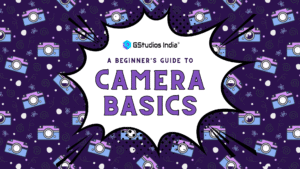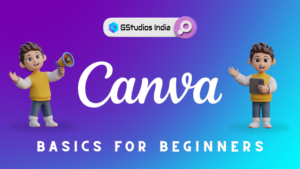Let your imagination soar by bringing your creativity to life through candid videos, stunning photos, and compelling commercial work. The question remains: how do we achieve this? What does it take to create a sequence? What is the best way to showcase exceptional techniques and stunning aesthetic results, while enhancing and highlighting the beauty of the chosen subject?
It’s an easy question to answer. Regardless of your experience level, a solid understanding of the basics is essential.
So first, let’s dive into what video editing is.
✂️ What is Video Editing?
Essentially, video editing involves arranging and manipulating shots to create a sequence that makes sense. The editing process involves selecting and arranging shots coherently. It is the editor’s responsibility to ensure that the footage remains intact and that continuity issues do not arise. Creating a vision may be part of the editor’s job.
Video editing involves combining footage from various sources into a cohesive and often more engaging final product. It is possible for a video editor to shoot footage with multiple cameras or to perform the duties of a cinematographer for a feature film. Besides being a captivating art form, video editing is a crucial component of both film and television production.
Video editing can be performed on computers using various software applications. Video editors take raw video and edit it in creative ways to make the content look better and more polished. They create special effects, add music to their work (if needed), and do other things that make them very unique in the world.
🎬 What Are the Basic Video Editing Techniques and How to Get Started?
These are the six sections we can divide it into:
1. Importing footage:
This process entails transferring video files from a camera or other source to a computer for editing. Various methods exist for transferring data from the camera to the editing platform.
The most common method is USB transfer, in which the camera or device is connected to the computer via a USB cable. Other approaches include using an SD card reader, a Firewire or Thunderbolt connection, or cloud storage.
Ensure your software recognizes the video file format when importing footage. If your program does not accept the format of your footage, you may need to convert it before importing.
2. Cutting and Splicing:
To create a new sequence, specific segments of the film must be selected, removed, or rearranged. This can be done using editing tools such as Adobe Premiere, Adobe After Effects, Final Cut Pro, Da Vinci Resolve, etc. You can load your video content into the software and use tools like the Razor Blade tool to trim and splice the remaining clips.
This enables you to alter the video to achieve your desired outcome in the new version. A crucial step in video editing is cutting and splicing, which is used to create a variety of effects, including
- the removal of extraneous material
- the addition of special effects
- the creation of seamless cuts between images
3. Transitions:
To create seamless transitions between shots, you can apply visual effects such as fades or wipes between each clip. Transitions can be employed to create various effects and signal changes in time, location, or mood. Typical transitions include the following:
- Cross dissolve: By progressively raising the incoming clip’s opacity and lowering the exiting clip’s opacity, this transition gradually blends one clip into another.
- Fade to black or white: With this transition, the video that is currently playing gets gradually replaced by a solid color like black or white over the full screen.
- Dip to color: Through this transition, the current video’s tone is replaced with a particular color over the full screen.
- Cut: A changeover where one clip is followed immediately by another
- Wipe: A transition in which a visual or item slides across the screen to reveal the following clip.
- 3-D Transition: A transition that gives off a 3-D appearance.
Additionally, they help the audience grasp the relationships between various shots and establish a sense of continuity. In video editing, a vast range of transitions are available, each with a distinct feel and aesthetic.
4. Color Correction and Grading:
In video editing, color grading, and correction are techniques used to alter and enhance a video’s color.
- Color Correction: This process involves adjusting the color balance to achieve a realistic and natural look in the video. This ensures that the whites, blacks, and mid-tones are balanced. Brightness, contrast, and saturation are all aspects of this process. To maintain uniformity throughout the film, it is also necessary to match the hues of different images or situations.
- Color grading: Color grading is the process of artistically altering the color of a video to achieve a particular look or feel. To reflect the tone or mood of the film. This can involve changing the color temperature, adding hues, and creating a specific color palette. Color grading can make a video look warm and sunny, cool and dark, or any number of other effects.
5. Audio Editing:
Audio editing focuses on enhancing and modifying the overall soundtrack of the video. It is a crucial aspect of video editing as it significantly influences the overall impact and appeal of the video. Some typical audio editing tasks are:
- Volume Adjustment: Changing the volume levels of various audio recordings to make them balanced.
- Noise Reduction: Reducing background noise, such as hum, wind, and other intrusive sounds.
- Equalization (EQ): It is the process of modifying the balance of various frequency ranges, such as the bass, mid-range, and treble, to amplify or mute particular sounds.
- Compression: It is the process of adjusting a sound’s dynamic range by amplifying quiet sounds and muting strong sounds.
- Panning: Modifying a sound’s stereoscopic spectrum to give the impression of space and direction.
- Sound Replacement: Replace or add sound effects, music, or narration to a video by using sound replacement.
- Synchronization: Synchronization is the process of matching the audio and video tracks to the lip-syncing of the performers or the musical beat
6. Exporting:
After all the modifications, exporting simply means creating a final version that can be shared, distributed, or played. Whether it’s a social media platform, streaming service, DVD, or film festival, there are several steps involved in getting the film ready for its intended audience. During the export process, the editor must make several decisions regarding formatting, resolution, frame rate, bit rate, codec, audio, etc.
Once all the settings have been made, the editor can export the finished video by selecting the Publish or Render button. The export process can take anywhere from a few minutes to many hours, depending on the length and complexity of the video. Once exported, the video can be uploaded, distributed, or viewed on a variety of platforms.
Remember that exporting the video is a critical step, as the settings used during this process will determine the outcome. Before sharing or publishing the final version of the video, it is advised to check that everything appears and sounds as intended.
✨ Conclusion
Video editing is a highly specialized field that requires attention to detail. It deals not only with video but also with audio, for a professional look. It is divided into many steps, including capturing video, assembling it, cutting and splicing it, adding transitions, correcting color and audio, and exporting the finished product.
Various techniques can be employed to capture video, including shooting with a camera or utilizing existing footage. Once the footage has been captured, it is assembled into a rough cut, where the editor selects the best shots and arranges them in a logical sequence. A freshly edited version of a video is produced by cutting and splicing, which involves taking out some parts of a video and combining the remaining parts.
To make a smooth transition between two independent video clips, transitions are used to join them together. To make a video look realistic and natural, color correction involves changing the color balance. Color grading is the process of artistically altering the color of a video to achieve a particular look or feel. Audio editing is a crucial component of video editing as it has a significant impact on the overall effectiveness and impact of the video.
Overall, video editing is a challenging and subtle process that requires both technical and artistic skills. A new and polished video is the result of both technical and creative work.
🚀 Ready to elevate your video editing skills?
Join our exclusive courses for aspiring filmmakers! Limited seats are available—book your FREE CONSULTATION today and begin your journey to creating captivating content!
Authored and Graphics by – Divyangi Jain





